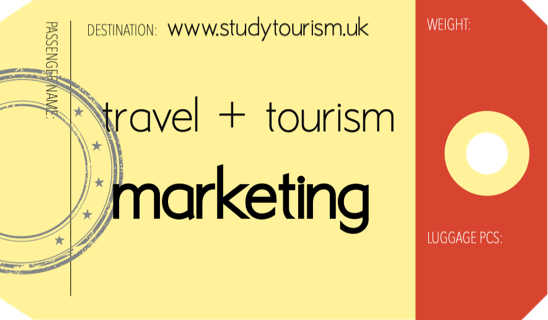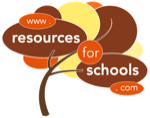Dedicated to supporting students studying Travel and Tourism
Interrelationships between marketing and customer service in travel and tourism organisations
What is marketing?
Market research:
. can help to determine if a business is viable
. identify gaps in the market
. assess the behaviour, characteristics + motivations of the target market
. identify customer needs + wants
. identify competitor activities
Importance of marketing
. Target market
. Research objectives
. Research methods
. Where - is research to be done
. When - is research carried out
. Who - will do the research
Principles of marketing
Surveys + questionnaires: flexible - email, in person, online etc
Observations: watching people, use cameras
Focus groups: in-depth discussion
Trials: test products + services
Interviews: formal (set questions) + informal (fluid)
Marketing segmentation
Internal sources:
Information the organisation already has: sales data, customer details etc
External sources:
Information available from other sources outside of your own organisation. Type of information: Market trends, competitor information, customer spending habits
Visit England: market segmentation
Benchmark against competitors
Compare your business with the competition, check websites and social media; prices; delivery; range of products etc
Producing a SWOT and PESTLE
A business can review its position in the market
Assess trends to plan for the future
Marketing activities
Online websites + media
Trade journals
Published reports
Government statistics
Newspapers
Social media
Customer feedback
Statistics
Examples:
Sales figures
Website traffic
Survey results – Office for National Statistics + Mintel & Keynote
Customer service and marketing
Views + opinions
Examples:
Interviews
Focus groups
Surveys
Inter-relationships
Collecting market research data enables an organisation to take action:
Competitors’ strengths + weaknesses
Assess the quality of the competition
Determine close + distant competitors
Reaction of competitors
Research data
Research data used to identify new products + services
Identify target markets
Identify product features
Promotion
Marketing mix
Influencing customer decisions and meeting needs
Types of customer
Understanding customer needs
Individuals
Families
Groups
Business
Leisure
Education
Market segmentation
Demographic
Socio-economic
Psychological
Geography
The buyer decision making process
Stage 1: Need or want
Stage 2: Search for information
Stage 3: Assess options
Stage 4: Make a choice
Stage 5: Evaluate the purchase
Factors influencing customer decisions
Marketing mix: 4Ps
Quality of service: perceived or real
Value for money: whatever the price
Desire or need: what the customer wants
Confident: trust the organisation
Customer service: levels of service
Communications: via range of platforms
Reputation: how it is seen
Customer needs
Stated
Unstated
Maslow's needs
Cultural needs
Language needs
Special needs
Profits and customer satifaction
Meet customer expectations
Sustainable profits
Customer loyalty
Improving the experience
Customer feedback
The marketing mix used by travel and tourism organisations
Marketing plan
Marketing plan includes:
. Market segment to be targeted
. Benefits of targeting that segment(s)
. Aims + objectives of the marketing strategy
. Strategies for the marketing mix:
Product . Price. Place. Promotion
Importance of marketing and promotion
Increase sales / usage / profitability
Competitive advantage
Positive brand image
Customer satisfaction
Products + services
Tangible: physically hold the product
Homogeneous: things like or similar to each other - standardised
Separable: products consumed after they are bought Storable: product will last a long time (not perishable)
Intangible: cannot be taken away - not physically held
Heterogeneous: try to standardise - but individualised
Inseparable: service delivered at the time
Not storable: services perishable, not used later
Product Life Cycle
Introduction: New product or service is launched. Marketing to promote as this is new. ‘Innovators’ most likely try new products/services
Growth: Sales and profits grow. Competitors will copy and add their own versions - so getting a good brand reputation and loyalty is important – differentiation is promoted to stay ahead.
Maturity: Lots of competition – prices often lower. Longest stage for a product/service as they become more popular in the mass market. Sales are high.
Decline: Sales and profits decline. Some companies not able to compete. Changes need to be made to survive - new markets, innovate etc.
Extension: The life cycle of the product/service extended – perhaps less competitors.
Innovate to change the product/service to attract new repeat customers.
Price
Pricing strategy
Any product or service is made at a cost, if the price is greater then a profit is made
Things to consider:
. The costs of the product/service – break-even point
. What will customers pay (may differ in different countries)?
. Where is the product lifecycle is the product/service?
. What are competitors charging?
. Is the product/service unique?
Pricing strategies
Cost plus
Economy
Penetration
Skimming
Premium
Competitor based
Dynamic
Seasonal
Promotional
Discounting
Place
Distribution channel
Supply chain
Marketing channel
Principals:: Accommodation Transport Ancillary
Wholesalers: . B2B tour operators . Global Distribution Systems
Retailers: High Street travel agents . Online travel agents
Consumers: Leisure travellers . Business travellers . VFR
. Specialist travellers
Promotion
Brand + product awareness
Increased sales + profits
Support advertising + marketing
Competition
Benefits of promotion
Market research
Market research:
. can help to determine if a business is viable
. identify gaps in the market
. assess the behaviour, characteristics + motivations of the target market
. identify customer needs + wants
. identify competitor activities
Planning market research
. Target market
. Research objectives
. Research methods
. Where - is research to be done
. When - is research carried out
. Who - will do the research
Primary research
Surveys + questionnaires: flexible - email, in person, online etc
Observations: watching people, use cameras
Focus groups: in-depth discussion
Trials: test products + services
Interviews: formal (set questions) + informal (fluid)
Secondary research
Internal sources:
Information the organisation already has: sales data, customer details etc
External sources:
Information available from other sources outside of your own organisation. Type of information: Market trends, competitor information, customer spending habits
Secondary research
Benchmark against competitors
Compare your business with the competition, check websites and social media; prices; delivery; range of products etc
Producing a SWOT and PESTLE
A business can review its position in the market
Assess trends to plan for the future
Secondary research: examples
Online websites + media
Trade journals
Published reports
Government statistics
Newspapers
Social media
Quantitative data
Statistics
Examples:
Sales figures
Website traffic
Survey results – Office for National Statistics + Mintel & Keynote
Qualitative data
Views + opinions
Examples:
Interviews
Focus groups
Surveys
Competitor analysis
Collecting market research data enables an organisation to take action:
Competitors’ strengths + weaknesses
Assess the quality of the competition
Determine close + distant competitors
Reaction of competitors
Identify new product or service
Research data used to identify new products + services
Identify target markets
Identify product features
Promotion
Marketing mix
Promotional campaigns objectives
Increase profits
Increase market share
Promote the brand
Respond to competition
Develop new products + services
Promotional campaign
Brand values
Target market
Campaign content
Timescale
Budget
Key Performance Indicators
Promotional materials + activities
Brochures
Blogs - Vlogs
Direct mail
Call to action
Door hangers
Endorsements
Promotional materials + activities
Landing page
Leaflets - Flyers
External sources:
Presentations
Posters
Trade fairs/exhibitions
Traditional media
Competitor analysis
Collecting market research data enables an organisation to take action:
Competitors’ strengths + weaknesses
Assess the quality of the competition
Determine close + distant competitors
Reaction of competitors
Identify new product or service
Research data used to identify new products + services
Identify target markets
Identify product features
Promotion
Marketing mix
The role of marketing in different travel + tourism organisations
Business aims
Increase profits
Increase market share
Launch new products
Develop new markets
Develop brand image
Marketing process
Market research
Marketing plan
Customer relationship
Evaluation
Analysis
Private business aims
Profitability
Increase market share
Sustainability
Respond to competition
Public organisation aims
Profitability
Customer service
Sustainability
Government criteria
Cost control
Education
SMART objectives
Specific
Measurable
Achievable
Relevant
Time-bound
What is a brand?
Logo
Image
Identity
Values
Reputation
Perception
Benefits of branding
Customer recognition
Customer loyalty
Confidence
Add value
Brand extension
Credibility
Attracts talent
Functional areas
Sales
Marketing
Human Resources
Finance
Operations
Information technology
Research + development
Administration
Mass markets
Large companies
High volumes – lower profits
Large marketing budget
Niche markets
Smaller specialist companies
Low volumes – higher profits
Small marketing budget
How marketing contributes to the success of travel + tourism organisations
Ansoff matrix
Market penetration
Market development
Product development
Diversification
Planning marketing
Push - Pull factors
Customer relationship management
B2B + B2C marketing
Impact of marketing
Attract customers
Customer spend
Customer retention
Customer loyalty
Organisational objectives
Brand development
Revenue + profits
Influences on marketing activity
External factors: PESTLE
Political
Economic
Social
Technological
Legal + ethical
Environment
PESTLE Political
Examples:
Civil unrest
International political situation
Terrorism
PESTLE Economic
Examples:
Recession
Cost of living crisis
Exchange rates
Interest rates
Tax
PESTLE Social
Examples:
Demographics
Social trends:
New experiences
Staycations
Health + wellbeing
Responsible travel - eco + sustainable
PESTLE Technology
Examples:
Social media
Websites
Apps
Transport
PESTLE Legal + ethical
Examples of laws:
Consumer protection
Consumer Rights
Sales of Goods
Health + Safety
Data Protection
Equal opportunities
Advertising standards
Codes of practice
PESTLE Environment
Examples:
Extreme weather
Natural disasters
Sustainability
Internal factors
Size of the organisation
Culture of the organisation
Resources
Budget
Size of the organisation
Larger T+T organisations are able to offer more products and services and market them with a large dedicated marketing team, who will specialise in different aspects.
Smaller organisations will compete with a more personalised customer service, offering niche products and services. They are likely to utilise social media as a cheaper platform.
Culture of the organisation
Vision
Values
Working practices
Ethos
Team
Budget
The financial position of company will larger determine the marketing budget and therefore its ability to promote its products and services.
Marketing department will review its cost effectiveness – measuring performance against targets set.
Size of budget will determine the marketing activities that they are able to do.
Resources
A marketing department will need resources in the form of technology and people.
Up to date websites and apps are a minimum for any T+T business.
Specialist marketing staff are increasingly important with such a wide array of advertising
Available – traditional, social media etc
Globalisation
Globalisation is the result of:
Reducing trade barriers between countries – free trade
Rising income in developed countries
A global outlook on life; holidays; education and work
Improved communication and transport
Globalisation
Changes in the business environment
All organisations need to be aware of their competition – domestic and international
. Monitor their websites and apps
. Review their promotional activities
. Keep up-to-date through industry trade shows and exhibitions
Globalisation
Benefits
. Increased market share + diversification
. Increased competition
. Business growth + increase in profits -
. New markets -
. Cater to customer needs in different countries
Globalisation
Things to be considered
Understand the politics, laws and culture in different countries
Exchange rates affect costs + prices
Maintaining consistent high standards around the world
Increased competition – review prices strategies + promotional mix
Creating the same experiences in different countries
Media

Tourism Board promotion
for Philipines (2017)
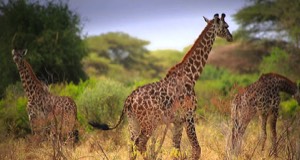
Tourism Board promotion
for Tanzania (2015)
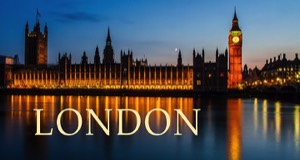
Tourism Board promotion
for London (2014)
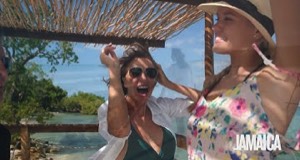
Tourism Board promotion
for Jamaica (2021)

Tourism Board promotion
for Nepal (2020)
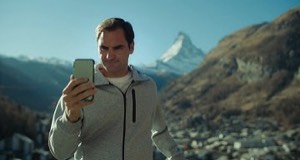
Tourism Board promotion
for Switzerland (2021)
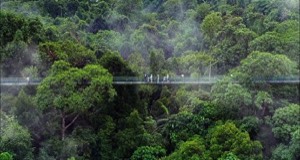
Tourism Board promotion
for Singapore (2020)
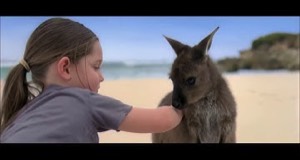
Tourism Board promotion
for Australia (2018)
